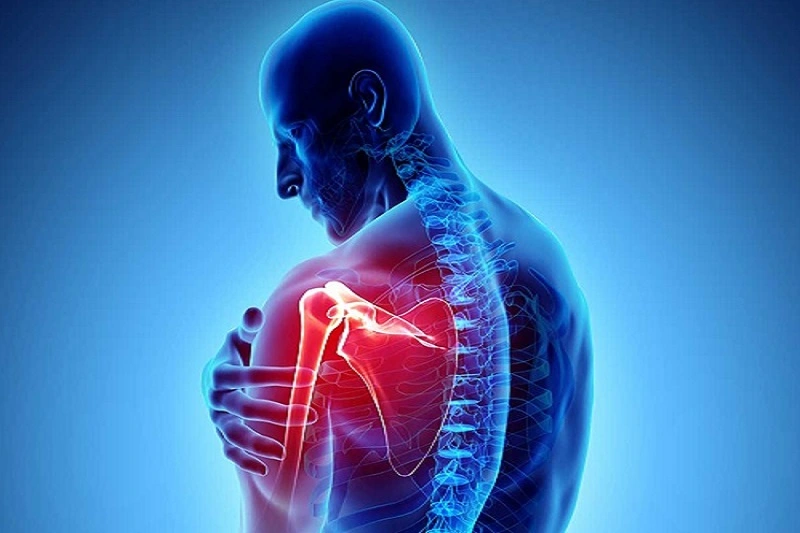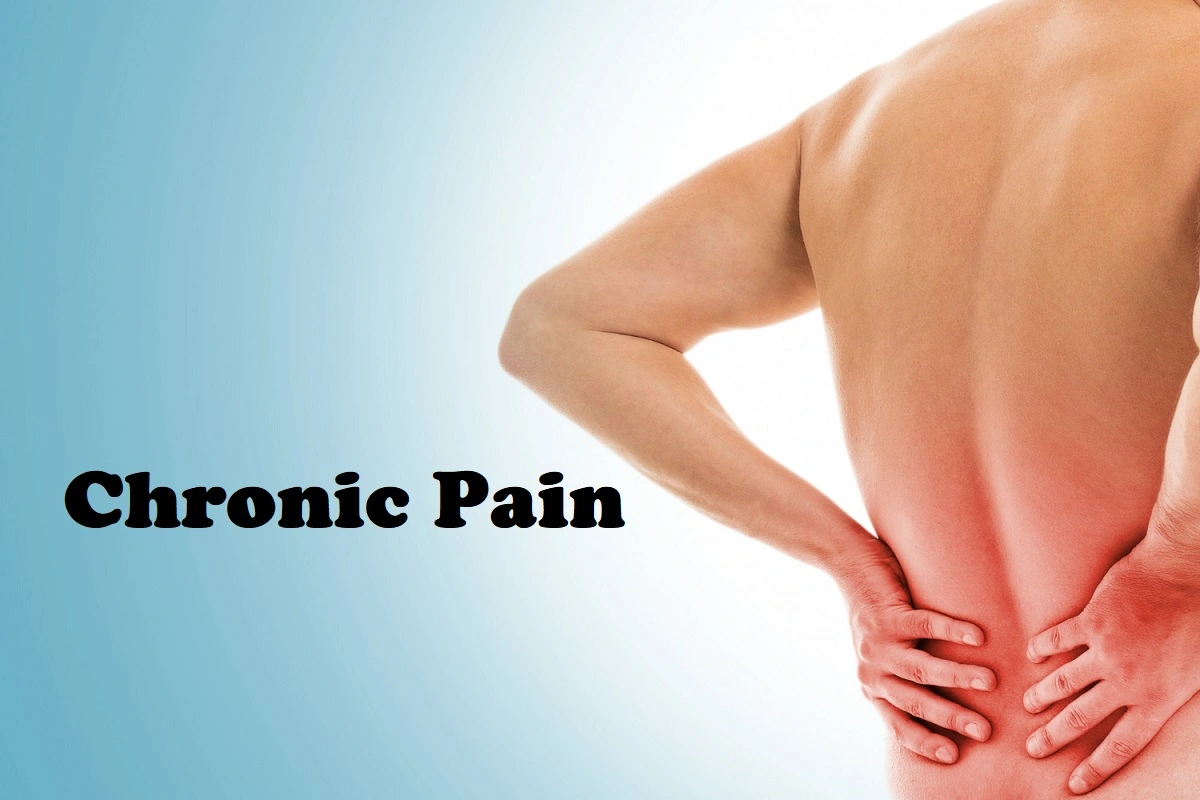Sorry, nothing in cart.
Chronic Pain: Types, Causes, Symptoms and Treatment
- By admin
- |
- General Blog
- |
What is Chronic Pain?
Chronic pain is defined as pain that lasts longer than three months. The pain could be chronic or periodic. This can happen in any part of your body.
Chronic pain can interfere with your daily activities, such as working, having a social life, and caring for yourself or others. This can lead to depression, anxiety, and trouble sleeping, which can make your pain worse. This reaction creates a cycle that is difficult to break.
Almost everyone feels pain from time to time. Pain is your body’s method of indicating that something is abnormal when you cut your finger or tear a muscle. You will no longer be in pain once the injury has healed.
Chronic pain is uncommon. After an injury, your body may continue to pain for weeks, months, or even years. Doctors generally classify chronic pain as any kind of pain that lasts 3 to 6 months or longer.
Chronic pain can have a major impact on your daily life as well as your mental health. However, you and your doctor might work together to treat it.
What is the difference between Other Pains and Chronic Pain?
Chronic pain is different from another type of pain called acute pain. Acute pain occurs when you have an injury, such as a simple cut on your skin or a broken bone.
It doesn’t last long, and the pain goes away as your body recovers. In contrast, chronic pain persists long after recovery from an injury or illness. Sometimes it also happens without any apparent reason.
What does Chronic Pain make you feel?
The sensation of pain is caused by a series of messages that travel through your nerve system. When you harm yourself, pain sensors in that spot are activated. They send an electrical signal as a message, which flows from nerve to nerve until it reaches your brain. Your brain interprets the signal and delivers the message that you are in pain.
The signal normally ends when the source of the pain is resolved, such as when your body heals a gash on your finger or a torn muscle. However, in the case of chronic pain, nerve signals stay active even after you have recovered.
Types of Chronic Pain include:
Post-Surgical Pain:
It is difficult when the pain becomes chronic after surgery. Stating that the pain lasts longer than the usual duration of treatment or is arbitrarily determined at intervals of 3 or 6 months. During the operation the patient suffers nerve injury, immediately after the operation, they may have pain that will be chronic. Surgery is often done because of the pain. If pain persists after an operation it can be difficult to establish whether it is a continuation of the original problem or new pain as a result of the operation.

Symptoms that may allow doctors to tell if you have chronic pain after surgery include:
- After a surgical procedure, pain Occurs
- The pain lasts at least three months after the surgery
- Pain is not thought to be due to other causes such as infection or cancer
- Your pain is not the same as the pain of the original condition
Back pain:
Back pain can be caused by injury, activity, and some medical conditions. It can affect people of any age and for various reasons. As people get older, factors such as past occupation and degenerative disc disease increase the likelihood of developing low back pain.

Back pain feels like shooting, burning, or stabbing muscles. In addition, the pain can radiate down one leg. It may be made worse by bending, twisting, lifting, standing, or walking.
Migraine:
Migraine is a type of headache that causes strong throbbing pain or feeling on one side of the brain. It is frequently accompanied by nausea, vomiting, and excessive light and sound sensitivity.
A migraine attack can continue from a few hours to many days, and the pain might be severe enough to interfere with everyday activities.

Symptoms of Migraine:
Migraines, which affect children and adolescents as well as adults, can progress through four phases: prodrome, aura, attack, and post-drome. Not everyone with a migraine goes through all the stages.
Primary symptoms
A day or two before a migraine, you may notice subtle changes that warn of an upcoming migraine, including:
- Constipation
- Mood changes, from depression to euphoria
- Food cravings
- Stiff neck
- Increased urination
- Excess fluid in the body
- Yawning frequently
Arthritis, Joint pain:
Arthritis is a condition caused by inflammation and pain in one or more joints. The main symptoms of arthritis are joint pain and stiffness, which usually worsen with age. The most common types of arthritis are osteoarthritis and rheumatoid arthritis.

Arthritis pain symptoms: joint pain, pain, stiffness, swelling, redness, and loss of range of motion are felt.
Neuropathic pain:

Neuropathic pain is often described as shooting or burning pain. It may go away on its own but is often chronic. Sometimes it is unrelenting and severe, and sometimes it comes and goes. It is often the result of nerve damage or a malfunctioning nervous system. The effect of nerve damage is a change in nerve function at the site of injury and in areas surrounding it.
Infection:
Infection can cause pain through several mechanisms. Acute, pain is a main symptom of infection and may be accompanied by direct somatic (eg, septic arthritis) or visceral (eg, appendicitis) tissue invasion, or nerve injury (eg, acute herpes zoster neuritis) and the inflammatory process.
Infection pain feels like chills and shivers, headache, and muscle aches. Cough with green phlegm. Sore throat or sore throat. A throbbing, painful tooth.
Muscle pain:
Muscle soreness is difficult to avoid, given that there are over 600 muscles in the human body. While muscle pain, also known as myalgia, is usually temporary and caused by overuse of muscles, it can also indicate a more complex problem, especially when it is related to physical exertion.
Muscle pain feels like shooting pain, numbness, stiffness of muscles, prickling and needle-like feeling, burning, stabbing pain Difficulty or discomfort while performing certain movements, swelling.
Fibromyalgia:
Fibromyalgia is the second most common condition affecting your bones and muscles. Yet it is often misdiagnosed and misunderstood. Its classic symptoms are widespread muscle and joint pain and fatigue.

There is no cure. But a combination of medicine, exercise, managing your stress, and healthy habits can ease your symptoms enough that you can lead a normal, active life.
Cancer pain:
Cancer pain takes many forms. It can be dull, aching, sharp or burning. It can be continuous, intermittent, mild, moderate, or severe. How much pain you feel depends on several factors, including the type of cancer you have, how advanced it is, where it is located, and your pain tolerance.
The pain may be due to the cancer itself. Pain can occur when cancer grows or destroys nearby tissue. As a tumor grows, it may put pressure on nerves, bones, or organs. The tumor may also release chemicals that can cause pain.
Testicular pain (orchialgia):
Chronic orchialgia is a distressing condition defined as chronic or intermittent scrotal pain lasting at least three months that significantly interferes with daily activities.
Despite being the reason for 2.5–4.8% of urologic clinic visits, there are currently no guidelines regarding the diagnosis and management of this condition. Men most often present with chronic auriclia in their mid to late 30s, although the condition can occur at any age.
Permanent pain in scar tissue:
Scar tissue refers to the thick, fibrous tissues that replace healthy ones that have been damaged. Healthy tissue can be destroyed by a cut, significant injury, or surgery. Tissue damage can be internal, so scar tissue can form after surgery or as a result of disease.
In the early stages, scar tissue is not always painful. This is because nerves in the area may have been destroyed along with healthy body tissue.
How common is chronic pain?
Chronic pain is a very common condition and one of the most common reasons why a person seeks medical care. About 25% of adults in the United States experience chronic pain.
What is the cause of chronic pain?
Sometimes a clear reason exists for chronic pain. You may have a chronic illness like arthritis or cancer that can cause persistent pain.
Injury and illness can also cause changes in your body that make you more sensitive to pain. These changes may continue even after the original injury or disease has healed. Something like a sprain, broken bone or even a brief infection can leave you with chronic pain.
Some people also have chronic pain that is not related to an injury or physical illness. Healthcare providers refer to this response as psychological pain or psychosomatic pain. It is caused by psychological factors like stress, anxiety and depression. Many scientists believe that this connection comes from lower levels of endorphins in the blood. Endorphins are natural chemicals that trigger positive feelings.
There can be many reasons for the overlap of pain. For example, you may have two different diseases. Or you may have something like migraine and psychogenic pain together.
What does chronic pain feel like?
Chronic pain can range from mild to severe. It may continue from day to day or may come and go. Symptoms and chronic pain may feel like:
- Throbbing
- Burning
- A dull ache
- Shooting
- Soreness
- Stiffness
- Squeezing
- Stinging
In some cases, pain is just one of many symptoms, which can also include:
- Weakness
- A lack of energy
- Feeling very tired or wiped out
- Not feeling hungry
- Trouble sleeping
- Mood changes
Diagnosis:
Chronic pain can be described as pain that lasts more than three months or that comes and goes (recurrent). Because pain is frequently a symptom, the doctor treating you should try to figure out what’s causing it. Because pain is subjective only the person suffering it can recognize and explain pain—determining where it comes from can be challenging.
Consult your doctor if you are experiencing severe pain. Your provider will want to know the following:
- Where is your pain?
- On a scale of 0 to 10, how intense is it?
- How often does this occur?
- What impact does it have on your life and work?
- What causes it to be worse or better?
- Whether you have a lot of tension or worries in your life.
- Whether you have been ill or had surgery.
What tests are done to identify the cause of chronic pain?
Your healthcare provider may perform an examination on you and give tests to determine the source of your pain. They may request the following tests from you:
- A blood test
- Electromyography is used to assess the activity of muscles.
- X-rays and MRIs are examples of imaging testing.
- Nerve conduction studies are used to determine whether your nerves function adequately.
- Test of reflexes and balance.
- Spinal fluid testing.
- A urine test was performed.
What is the Treatment for Chronic Pain?
To treat chronic pain, healthcare providers must first determine and treat the root cause of the pain. However, there are situations when they are unable to locate the source. If this is the case, they will focus on pain treatment, often known as pain management.
Chronic pain is treated in a variety of ways by healthcare providers. Several things influence the prognosis, including:
What kind of discomfort are you experiencing?
- If you know what’s causing your suffering, tell us about it.
- Your age as well as your overall health.
- The most effective treatment methods use a combination of measures, including medicines, lifestyle changes, and therapy.
If you experience chronic pain as well as depression or anxiety, it is critical that you seek treatment for your mental health condition(s). Chronic pain can be caused by sadness or anxiety. For example, if you experience sadness, exhaustion, sleep disturbances, or decreased activity, it may aggravate your chronic pain.
Which medications can be used to Treat Chronic pain?
Your doctor may advise you to take the following medication to treat chronic pain:
Anticonvulsants
Anticonvulsants (Pregabalin, Gabapentin) medication used to treat chronic nerve pain. (Medications that prevent seizures)
Anticonvulsants medication Includes:
Antidepressants:
The link between depression and pain is why doctors often use antidepressants (Sertraline, Escitalopram) to treat chronic pain. These antidepressant medicines can help with both the pain and the emotional stress it causes.
Muscle Relaxant:
Muscle Relaxant (Carisoprodol) is used to treat Muscle Pain effectively.
Following Muscle Relaxant medication used for Muscle pain Treatment:
Opioids: (Tapentadol)
Tapentadol and Tapentadol Extended Release opioid medication are mostly prescribed by doctors to treat Chronic Pain. They can be addictive, and you can build up a tolerance to them over time. Because Opioids are strong painkillers and are used for long-term pain treatment that’s why healthcare providers usually try other pain treatment options before prescribing opioids.
Following Tapentadol Opioid Painkillers mostly prescribed for Chronic Pain Treatment:
Chronic Pain and Your Mental Health
Chronic pain can affect your daily life, preventing you from doing all the things you want to do and need to do. It can take a toll on your self-esteem and leave you feeling angry, sad, anxious, and hopeless.
The link between your feelings and your pain can create a cycle. When you are hurt, you are more likely to feel sad. This can increase your pain even more.
The link between depression and pain is why doctors often prescribe antidepressants (depression pills) to treat Long-term pain. Depression pills can help with both the pain and the emotional stress it causes.
Pain also interferes with sleep and increases your stress levels. Both lack of sleep and high stress can make the pain stronger.
Get help for chronic pain
If you have an injury and it is not healing, see your primary care doctor or pain specialist. They can help you find relief so the pain doesn’t stop you from living your life. Some options include medication, relaxation therapy, physical therapy, acupuncture, and lifestyle changes, such as getting enough sleep and not smoking.
Frequently asked questions about chronic pain:
What are examples of Chronic pain?
Common types of chronic pain include arthritis, joint pain, back pain, and neck pain.
What is the main cause of Long-Term pain?
Well-known chronic pains include rheumatoid arthritis, osteoarthritis, and fibromyalgia, but diseases such as cancer, multiple sclerosis, stomach ulcers, AIDS, and gall bladder disease can also cause persistent pain and are more likely to last.
Is Chronic Pain Harmful?
Long-term Pain significantly impairs quality of life, leads to loss of productivity, loss of wages, exacerbation of chronic disease, and psychiatric disorders such as depression, anxiety, and substance use disorders. Patients with chronic pain are also at a significantly increased risk of suicide and suicidal thoughts.
What are the 4 types of pain?
The 4 most common types of pain Include:
- Extreme pain
- Nociceptive pain
- Chronic pain
- Neuropathic pain
What is exactly Chronic Pain?
When pain lasts for 3 to 6 months or more, it is called chronic pain. When you hurt day in and day out, it can take a toll on your emotional and physical health. About 25% of people with chronic pain will have a condition called chronic pain syndrome (CPS).
At what age does chronic pain occur?
Paradoxically, however, chronic pain prevalence in cross-sectional studies often peaks at age 60 years and probably declines after 30–35.
What is the fastest pain reliever?
The most powerful painkillers are the Opioid class medicine Tapsmart 200 mg contains Tapentadol. It is very effective, but sometimes it can have serious side effects. Because of the risks, you should only use them under a doctor’s supervision.
What is the Safest Pain Reliever?
Soma 350mg is generally considered to be safer than other pain relievers. It does not cause side effects like abdominal pain and bleeding.
What are the 7 factors of pain?
- Attention (Pain disrupts the person’s attention and forces them to focus on their body)
- Interpretation
- Catastrophic thinking
- Sense of agency
- Expectations
- Anxiety
- Attitudes toward pain
Is Arthritis Pain?
Pain caused by arthritis affects millions of people in the United States each year. About one in four adults with arthritis about 15 million people experience severe joint pain related to arthritis. Additionally, about half of adults with arthritis have persistent pain.
 English
English
 French
French  German
German